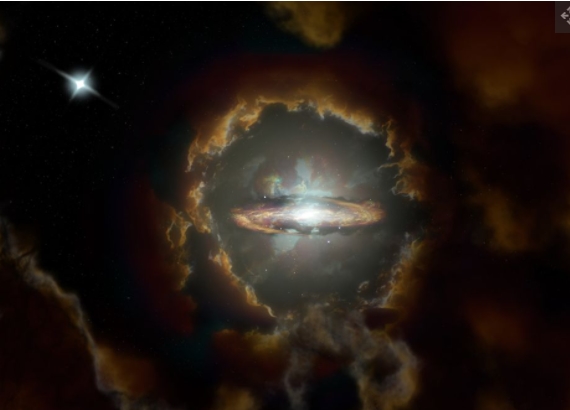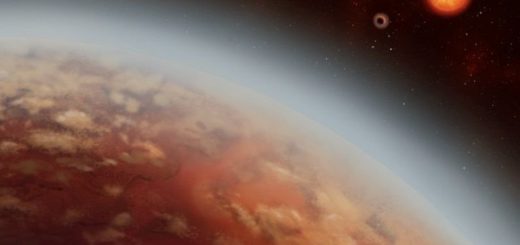Massive disk galaxy could change our understanding of how galaxies are born

A massive, rotating disk galaxy that first formed just 1.5 billion years after the Big Bang, could upend our understanding of galaxy formation, scientists suggest in a new study.
In traditional galaxy formation models and according to modern cosmology, galaxies are built beginning with dark-matter halos. Over time, those halos pull in gases and material, eventually building up full-fledged galaxies. Disk galaxies, like our own Milky Way, form with prominent disks of stars and gas and are thought to be created in a method known as “hot mode” galaxy formation, where gas falls inward toward the galaxy’s central region where it then cools and condenses.
This process is thought to be fairly gradual, taking a long time. But the newly discovered galaxy DLA0817g, nicknamed the “Wolfe Disk,” which scientists believe formed in the early universe, suggests that disk galaxies could actually form quite quickly.
In a new study led by Marcel Neeleman of the Max Planck Institute for Astronomy in Germany, researchers spotted the Wolfe Disk using ALMA, the Atacama Large Millimeter/submillimeter Array in Chile. They found out that the object was a large, stable rotating disk, clocking in at a whopping 70 billion times the mass of our sun.
In the new observations, the disk appears as it was when the universe was just 1.5 billion years old, or 10% of its current age. The disk appears extremely massive and stable for something so young. So how could such a massive galaxy form so quickly, so early in the universe?
Researchers suggest that the galaxy might have formed by a process known as “cold-mode accretion.” They think that the gas falling in towards the galaxy’s center was actually cold so, because the gas didn’t need time to cool down as it approached the galactic center, the disk was able to more rapidly condense.
“The result provides valuable input for a present-day discussion about how galaxies form,” according to a statement from the Max Planck Institute.
However, astrophysicist Alfred Tiley noted in a Nature News & Views article accompanying this study, these findings are based off of a single galaxy. He emphasized that more similar observations would be needed to validate this hypothesis.



 Creators of mankind
Creators of mankind Description of “Tall white aliens”
Description of “Tall white aliens” Where they came from?
Where they came from? About hostile civilizations
About hostile civilizations The war for the Earth
The war for the Earth “Tall white aliens” about eternal life
“Tall white aliens” about eternal life Video: “Nordic aliens”
Video: “Nordic aliens” Aliens
Aliens Alien encounters
Alien encounters The aliens base
The aliens base UFO
UFO Technology UFO
Technology UFO Underground civilization
Underground civilization Ancient alien artifacts
Ancient alien artifacts Military and UFO
Military and UFO Mysteries and hypotheses
Mysteries and hypotheses Scientific facts
Scientific facts


















